During the Industrial Revolution demand for limestone went through the roof, as burnt or quick lime is an essential ingredient in lime mortar. The mill towns and industrial cities were expanding at a phenomenal rate as workers left the land for the towns and work in the new factories.
Limestone quarries at Dove Holes were able to supply the demand, but the problem was getting it to the building sites. Packhorse and cart were just not viable means of shifting the quantities required, so the new-fangled transport system of artificial waterways was used to provide fast and efficient transport.
The Peak Forest Canal Company was set up in 1794, with the aim of connecting the new Ashton Canal at Dukinfield with Chapel Milton and a tramway from the quarries at Dove Holes. The plan was revised to reduce costs, the canal terminating just below the village of Bugsworth (now the more genteel Buxworth) in a complex of loading wharves, basins, lime kilns and warehouses.
Bugsworth Basin
View Larger Map
The site was awarded Scheduled Ancient Monument status in 1979, and as such cannot be touched by development, but this was not always the case. The complex was abandoned and dry in the 1960s, and was earmarked as the route for the new, widened A6 bypass. A vigorous campaign by locals, the Waterways Recovery Group and spearheaded by the Inland Waterways Protection Society was successful in getting the threat removed, and in 1968 work started to clear the basins and re-establish boat access. This was mainly volunteer activity, the IWPS badgering and cajoling local authorities and businesses for equipment and materials.
Thirty years later and the basin welcomed it’s first boat for over 70 years. It now provides excellent moorings (although there is some traffic noise from the A6) and a glimpse into the past. I love it.
The Lower Basin, the most popular mooring spot.

The Middle Basin
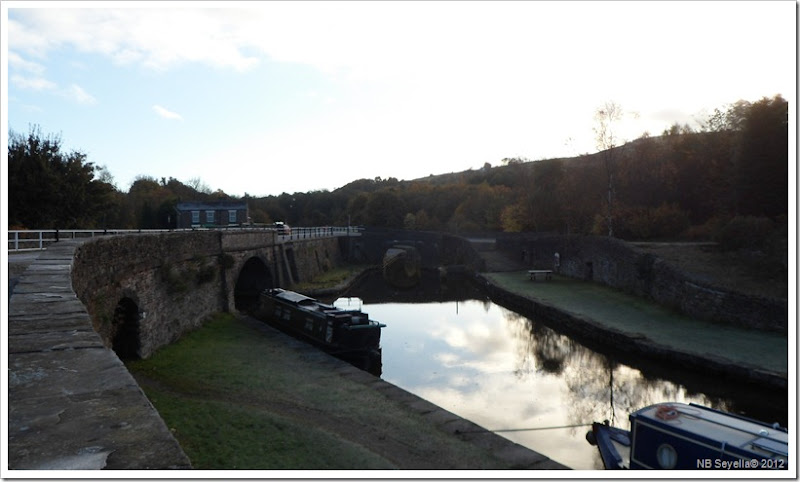 The arch on the left leads to the short Middle Basin Arm, ahead goes to the Upper Basin.
The arch on the left leads to the short Middle Basin Arm, ahead goes to the Upper Basin.Looking back at the Upper Basin from the tramway
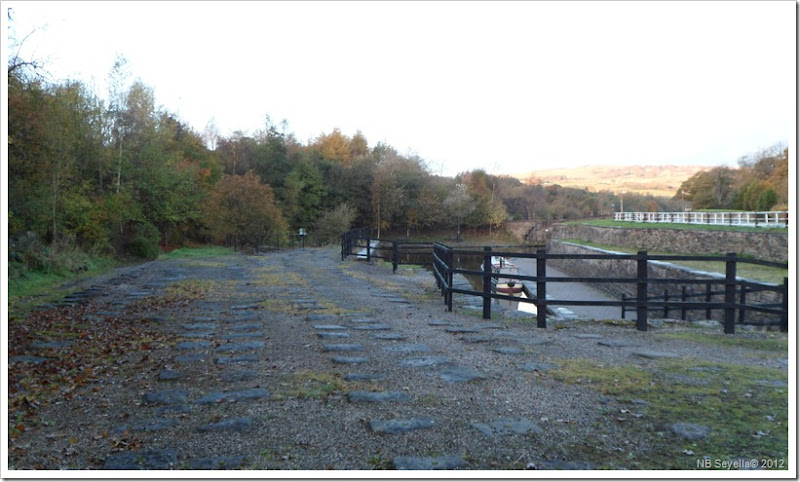
The setts in the foreground carried the rails for the horse-drawn trucks on the tramway. Limestone was tipped into the boats from above.
While the tramway was being built seams of coarse grained gritstone were uncovered and provided another good source of revenue for the canal. It was used for paving slabs and cobbles.
Not being suitable for tipping into the boats, it had to be craned into the holds.
Meg investigates the remains of a post-crane alongside the Lower Basin
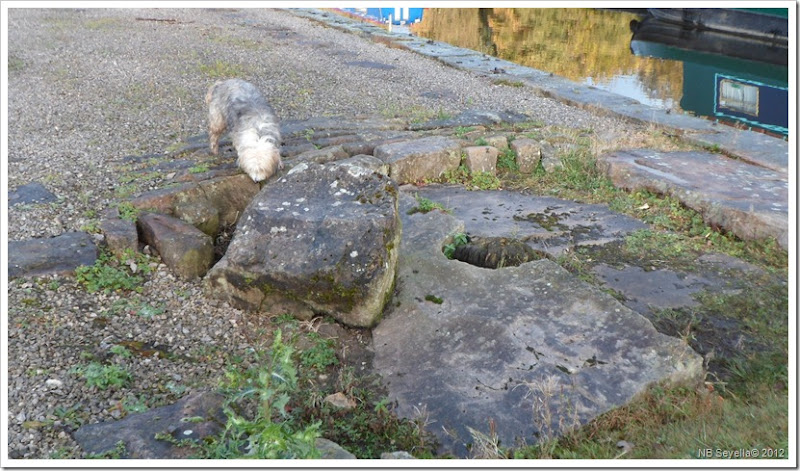
The Middle Basin Arm was once covered, and had a small warehouse alongside.
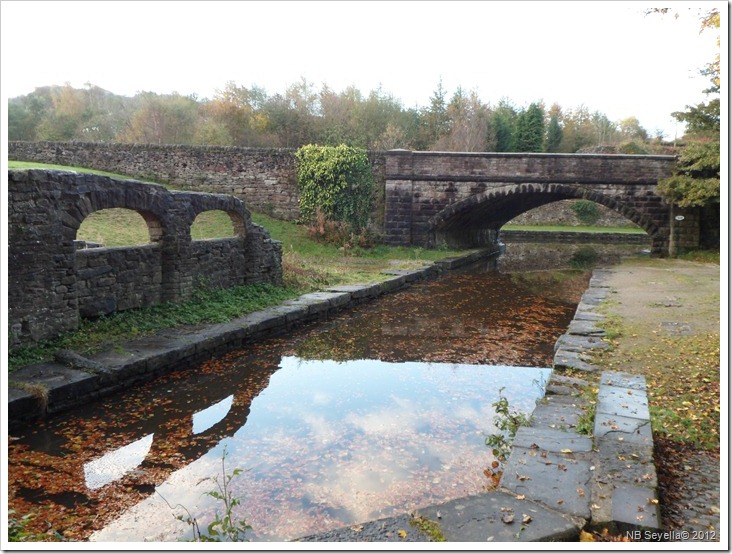
Up the tramway a spur ran off, over Black Brook, and supplied lime-kilns on New Road.
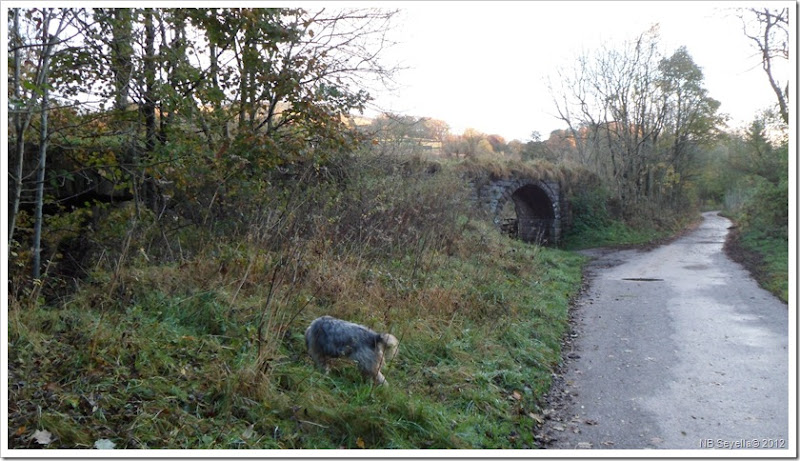
The route of the tramway has been surfaced for a fair distance, now forming a cycle and foot path. Further up the stone track setts are still in place.
Meg cools her feet in Black Brook
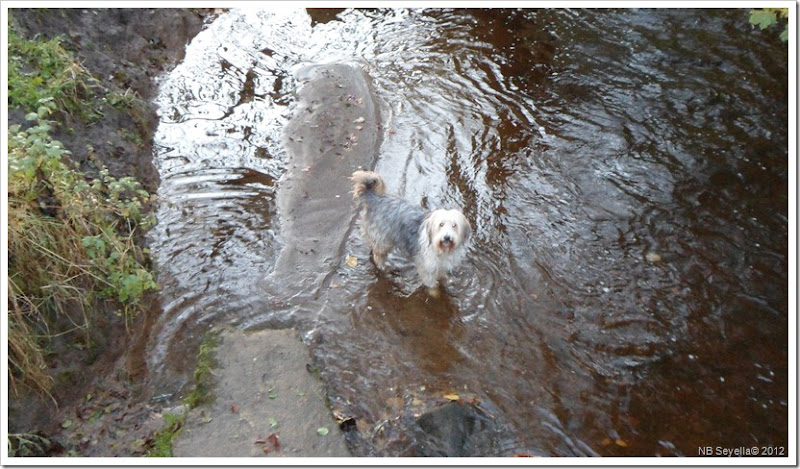
We had Mags’ sister Dot, and her son Paul over for Sunday dinner, a good afternoon on a pretty miserable day, weatherwise.
Brian and Ann-Marie (NB Alton) turned up in the dark and rain, about half past five, and suggested we take on diesel and coal this morning. What a fine idea!
Today started bright but has gone downhill, and we’ve much the same for the rest of the week. Still, we shouldn’t complain. I’d rather be here than in New York at the moment!
Sunlight just gilding the treetops.
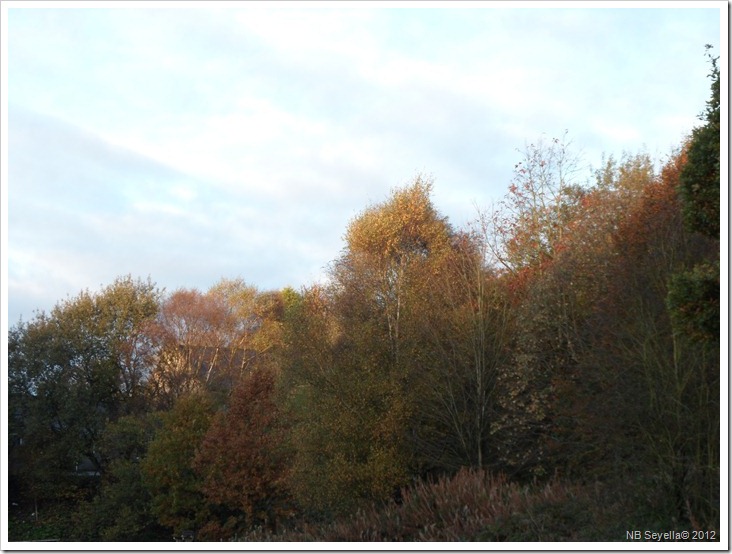
Buxworth Village.
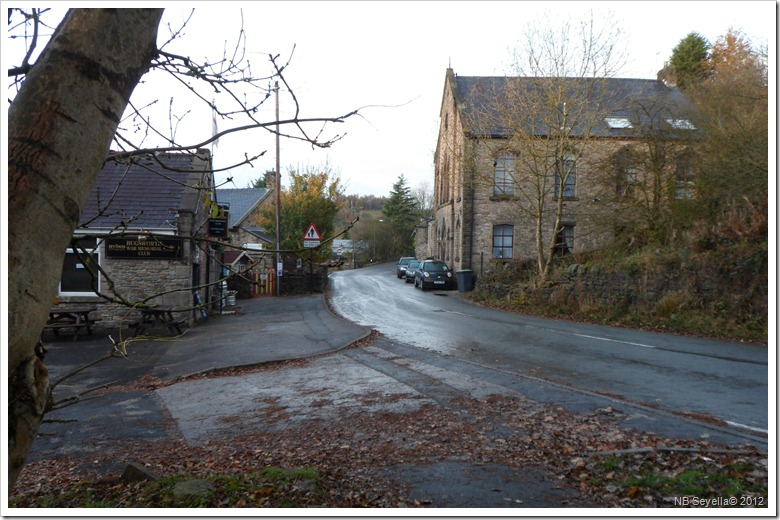
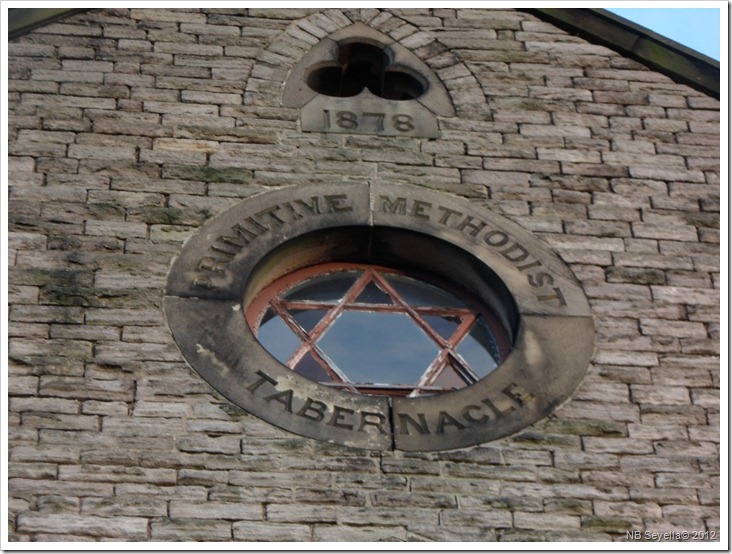
Locks 0, miles 0
1 comment:
Greetings,
We love Bugsworth as well, it's worth putting up with the traffic noise just to be there.
The coal boat is trading as Inland Waterways Services and the chap's name is Chris Iddon. Phone:
07921 694287 or:
07902 851914
Web site: www.peatanddiesel.co.uk
Not much on that though.
And his dog is called Stanley.
Take care,
G.&J.
Post a Comment